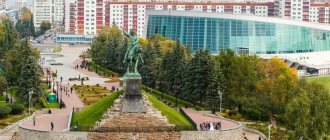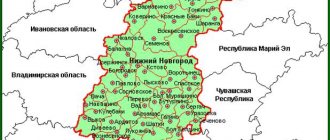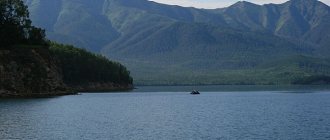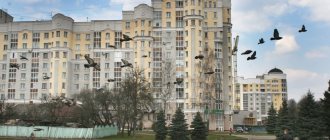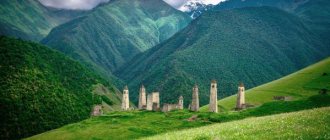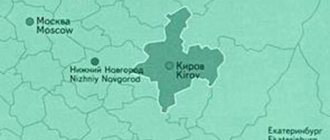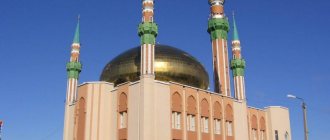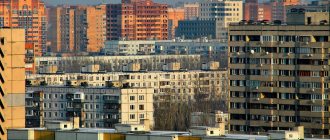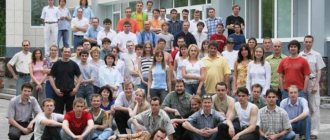There are probably many among us who have never heard of such a small but quite interesting city as Sterlitamak. "What area is this?" - they ask, usually a little surprised. We answer: this rather modest-sized settlement is located in the Republic of Bashkortostan (Russia).
What is this place famous for? What is so amazing about it? And why should everyone visit it at the first opportunity? This article is ready to answer all these and many other questions that are most often asked about the city of Sterlitamak. What area? How much time? Is the climate different? What do the local population do and what are the features of the local nature? All this will be discussed below.
In general, I would like to immediately note that when discussing the city of Sterlitamak, what region or region it is, it is not entirely correct to ask. Why? The thing is that this locality belongs to another territorial unit called a republic.
Section 1. General information about the city
So, Sterlitamak (which region of Russia and whether it is permissible to ask such questions in principle was indicated above) is considered the second most populous administrative center of the Republic of Bashkortostan in the Russian Federation.
It should be noted that this is a fairly large mechanical engineering hub by modern standards, as well as one of the most important centers of polycentric agglomeration. Sterlitamak is also known to many for its developed chemical industry.
Purely geographically, the city of Sterlitamak, the area of influence of which on the economy of our country is actually difficult to underestimate, is located on the left bank of the river. Belaya, 121 km south of Ufa.
This settlement was founded quite a long time ago, back in 1766. The region of the city of Sterlitamak had the same name, but subsequently, in 1953, it was abolished.
Delving into history, you can find out that this settlement initially arose around the so-called Sterlitamak salt water pier, but it was given the official status of a city in 1781.
In the not so distant past, the city of Sterlitamak (which region it was before 1953 is indicated above) was the capital of the autonomous Bashkir Republic. A little later, the role of the most important city in the region was transferred to Ufa, as a result of which the population in the city decreased significantly. Today, more than 278 thousand people permanently live here.
The time difference with Moscow is 2 hours.
Stelitamak museums and theaters
The cultural life of Sterlitamak is also diverse - in its museums and theater institutions you can see a lot of interesting, educational and beautiful things.
Stone Museum
- Address: Ishimbaysky district, Shakhtau-1 quarry.
In the 80s In the 20th century, the surroundings of Sterlitamak became the site of geological research: the Shakhtau quarry of the Early Permian period was discovered here. Ivan Skuin, a miner working in a quarry, became the initiator and inspirer of the Stone Museum, which today bears his name.
The museum opened its doors in 1985 and is still a popular tourist attraction. Among its more than 3,000 exhibits, it displays interesting fossils discovered during quarry exploration: limestone and faunal remains that are approximately 300 million years old.
The attraction is constantly visited by organized groups of schoolchildren and students, excursions are held free of charge, the costs of maintaining the exposition are now covered by the commercial organizations "Raw Materials".
Sterlitamak Art Gallery
- Address: Kommunisticheskaya st., 84.
The center of fine arts and artistic culture of the city of Sterlitamak is a branch of the Bashkir Museum of Fine Arts, which has been operating here since 1997. The gallery is a place where works of famous artists of the region from Ufa, Sterlitamak and other cities are exhibited.
Particular attention is paid here to contemporary art. Exhibitions of paintings from the collections of the main museum are often held. The gallery carries out educational work; creative evenings, lectures, master classes and other entertaining and educational events are held on its territory, which you can watch on your own.
Russian Drama Theater
- Address: st. Khudayberdina, 18.
One of the main theaters of the city, existing since 1946. Founded by a resolution of the Council of People's Commissars of the Bashkir Autonomous Soviet Socialist Republic on the basis of the Beloretsk Drama Theater that toured in the city. The most outstanding leader in the history of the institution is considered to be Konstantin Khristoforovich Shakhbazidi, who in August 1946 replaced the first director I.I. Chernyshevsky-Tolkachev.
Today the repertoire of the cultural attraction includes more than 600 performances. Much attention is paid to the classics. Performances and performances are based on famous plays and classic works of Russian and world literature. The works of Tolstoy, Ostrovsky, Chekhov, Schiller, Shakespeare, Gorky, Gogol, Bulgakov, Camus and many other authors are embodied on stage.
Sterlitamak State Theater and Concert Association
- Address: ave. Lenina, 30V.
Includes the second most important in the city, the Sterlitamak Bashkir Drama Theater, as well as the State Philharmonic Society. This drama theater has been operating since 1991. It stands out because it has a national flavor; in the life of the establishment, much attention is paid to local authors and stories.
The date of its opening is considered to be the premiere of the play “Heirs” based on the play by local author Dulat Isabekov. There are many honored and people's artists of Bashkortostan in the troupe. The team has become a laureate of many competitions, the artists successfully tour with their productions throughout the country.
The State Philharmonic, located in a separate building, employs five groups. The most famous are the Dance Theater and the pop and folk ensemble Sabri. An important event in the cultural life of the city are performances by the local folk orchestra. A literary and musical lecture hall operates on the basis of the Philharmonic.
Section 2. Where did this name come from?
As for the name of the city itself, it turns out that it did not appear by chance at all, as it might seem at first glance, but after the merger of two words: the name of the local river Sterli, which flows through the central part of the city, and the word “tamak”, which in the Bashkir language it means “mouth of a water source”, or “throat”.
Thus, it is not difficult to guess that if we undertake to translate the entire word into Russian, it turns out that the name Sterlitamak sounds like “the mouth of the Sterli River.” Quite a euphonious and very logical name.
Section 3. Features of the physical and geographical location
The city of Sterlitamak, what region it is and whether it exists at all, was indicated above, is located in the European part of the Russian Federation. To the east of it lie the Ural Mountains, and to the west is the endless and very picturesque East European Plain.
It should be noted that in the vicinity of the city there are the so-called shikhans, which are unique geological natural monuments. Near Mount Kushtau there are numerous children's health camps, holiday homes, ski resorts with slopes and lifts. And this automatically means that there is almost never a shortage of tourists here.
Initially, the city of Sterlitamak was created between the Ashkadar and Sterli rivers. This is where the Old Town is now located - the historical center of Sterlitamak. Subsequently, of course, like many other cities in the world, it was built up. The most active population growth was in the northern and western directions. To date, 5 road bridges and 1 railway bridge have already been built across the Sterlya River within the city.
People interested in our country often ask why this settlement did not develop in a southern, seemingly more logical direction. The thing is that its growth there is limited by the Olkhovka River, which is the left tributary of the Ashkadar.
Parks and monuments, streets
Merchants' houses on:
Karl Marx street
- Estate of merchant Kuznetsov
Address: st.
Karl Marx, 88 It is a monument of wooden architecture and stands out for its intricate carved script.
It is also called the Gaidar House, since in 1921 the headquarters of the communist battalion under the command of Arkady Gaidar was located here.
- House of the merchant Zvezdin
Address: st.
Karl Marx, 107 An old brick mansion built at the turn of the 19th-20th centuries by Mikhail Evseevich Zvezdin. There was a hardware store on the ground floor, and a merchant's family lived on the second floor.
Now the prosecutor's office is located here. It is an architectural monument.
- Patrikeev's house
Address: Karl Marx, 89
The house was built in 1893. Architectural monument.
After the revolution there was a library here. Today there is a military commandant's office.
Zemstvo Council
Address: st. Karl Marx, 103
The building was built in 1913-1914 for the district zemstvo government and forms a single architectural complex with the mansion of the city public bank, which is now occupied by the local history museum.
After the October Revolution, the building was called the Palace of Labor. Party conferences and congresses of Soviets were held here.
Mira Street
- Milovanov's House
Address: st.
Mira, 3 An architectural monument of the late 19th century. Nowadays there is a grocery store here.
- Usmanov's House
Address: st.
Mira, 53 The mansion was built at the beginning of the 20th century by Gaifulla Galliulovich Usmanov. The first floor was occupied by a textile store, on the second there was a hotel.
In 1917, the building was confiscated. During the Patriotic War, the Druzhba clothing factory was located here.
- Malyshev House
Address: st.
Mira, 60 Architectural monument of 1915. Now there is a computer center here.
- House of Evdokia Nikitina
Address: st.
Mira, 61 Mansion of the early 20th century. Modern use - stationery store.
Khalturin street
- Budaev's house
Address: st.
Khalturina, 17 Brick building built in 1907. It is an architectural monument.
Used as a residential building.
- Dokuchaev's House
Address: st.
Khalturina, 19 The date of construction of the mansion is 1910. Now there is a residential building here.
Section 4. The current image of the city
The city of Sterlitamak is currently a major center of republican subordination. Previously, it was the capital of the Bashkir Autonomous Republic, which was then moved to Ufa, located 120 km from the above-mentioned city.
Today's settlement is famous for its mechanical engineering, chemical industry, and large federal highways pass nearby.
Despite its modest size, the city has interesting places to visit. For example, amazingly beautiful mosques have been preserved in the old part of the city.
It should be noted that, starting from the seventies of the last century, a special scheme was introduced in Sterlitamak: all residents intensively green their city. As a result of such painstaking work, the current settlement surpasses even the million-plus city of Samara in terms of the number of birch trees.
The infrastructure here is very developed. Everywhere guests of the city can expect a variety of shops, boutiques, cafes, pubs, and restaurants. By the way, not everyone knows that in 2007 Sterlitamak was recognized as the most comfortable city in the Russian Federation.
Churches and Temples
Tatiana Church
Address: st. Khalturina, 119 Phone: , Opening hours: Mon-Sat 07:00-19:00, Sun 07:00-19:30
The temple was founded by Tatyana Dyakova in 1897. Nearby, in a two-story building, an almshouse named after the Fedorovs was built. The church was closed twice - in 1930 and in 1959.
In the 90s, the temple was returned to the Orthodox Church. Since 2002, the Tatyana Church has become the courtyard of the Mother of God-Tabynsky Convent.
In the temple there is an icon of the Mother of God of the Addition of Mind. In front of the icon they ask for help in teaching and raising children.
Nur al-Iman Mosque
Address: st. Mira, 9
The mosque took three years to build with funds from local organizations and entrepreneurs. In 2007, it officially opened. The name of the mosque is translated as “ray of light.”
The mosque can accommodate 800 people and is divided into two halls – men’s and women’s. The interior decoration is modest, only the floor is decorated with Uzbek carpets.
Due to the many windows, the building is bright and cozy. The minarets around the main dome of the mosque serve as observation platforms.
Cathedral of St. Nicholas the Wonderworker
Address: st. Kalinina, 52 Phone: 8 8211 50733 Opening hours: Mon-Sat 08:00-20:00 Sun 07:00-20:00
St. Nicholas Church was built not so long ago, in 1988. Before this, after the closure of the Tatyana Church, services were held in a house purchased by the Orthodox community, where the baptismal church at St. Nicholas Cathedral is now located.
Now the temple is a cathedral - part of the Annunciation Convent. The patronal feast of the temple - the day of remembrance of St. Nicholas the Wonderworker - is celebrated on December 19. On this day, after the service, there is a festive concert, tea drinking and akathist reading.
Section 5. Salt water pier - a unique place on the map of Russia
Sterlitamak owes its emergence to a certain merchant Savva Tetyushev, who proposed a project to build a pier to receive huge quantities of Iletsk salt brought here. The total weight of the supplied seasoning, according to the plans of the businessman at that time, could easily reach a million pounds; problems with loading and unloading would still not arise. For those who are curious about when exactly the events listed above took place, let’s say that Tetyushev’s project with the attached notes of the Orenburg governor was approved by decree of January 19, 1766. Quite a significant period of time, isn’t it?
The first caravan with Iletsk salt, which left the pier in the spring of 1767, was not at all the promised million pounds, but three times less. With the emergence of the pier, local salt carriers called it Ashkadar, and not Sterlitamak, as Tetyushev wanted.
Soon, multiple shortcomings of the chosen location were revealed. As a result of the inspections, at the proposal of the Chairman of the Salt Commission of the Russian Federation P. D. Eropkin, in 1769 a salt pier from the shallow river. Ashkadar was moved to its original location.
She again began to be near the Bugulchan tract on the river. White. Although they still continued to send barges with other cargo from the previous pier, the weight of which, by the way, significantly exceeded the amount of salt previously exported.
It turns out that the city of Sterlitamak was very important in the life of the region.
Section 6. Where to go first?
If you are lucky enough to find yourself in this locality, try to find time and go to the local history museum, where many truly unique exhibits are collected.
On weekends, the city usually hosts interesting performances by the Benefis theater studio. They are distinguished by quite creative solutions, excellent directorial work, and unique acting. This production will appeal to everyone, from children to experienced theatergoers.
By the way, in Sterlitamak there are not one, but three good theaters.
Section 7. Monument at the 5th verst of the Ufa Highway
It is also worth seeing a very revered in the city and rather unique monument at the 5th verst of the Ufa Highway, which was built in memory of the executed members of the Revolutionary Committee and the Council of People's Commissars, killed by the White Czechs. This very tragic event occurred on the night of September 27-28 in 1918, exactly at the place where today’s monument is erected.
During the USSR, a wooden monument was initially placed here, then in the 60s a stone obelisk was built. Now this memorial is located in the very center of Sterlitamak on Lenin Avenue.
Needless to say, on holidays local residents always come here and lay flowers.
general information
The sphere of trade and entrepreneurship is intensively developing in the city. In November 2014, the second stage of the Fabri shopping center was put into operation (total area - 57.5 thousand sq.m). The new areas house the Leonardo hobby hypermarket (more than 60,000 items of goods), and there is underground parking for 1,200 cars on the ground floor. In the fourth quarter of 2014, the first stage of the Astrum shopping and entertainment complex with an area of 22.3 thousand sq.m. was commissioned on the territory of OJSC UTK Centralny. In March 2016, the opening of the second stage of the shopping complex with an area of 9.5 thousand square meters took place. Upon completion of construction, the total area of Astrum will be 42 thousand sq.m. In February 2016, after the reconstruction of the building of Byttechnika OJSC, a retail store opened (Mira St., 2b) with an area of 7 thousand sq.m. Also in 2014, construction began on retail with a total area of 9.1 thousand sq.m. and retail and entertainment with a total area of 53 thousand sq.m. with parking for 1100 cars.
Torgovy (Lenina Ave., 2m) opened in April 2015. The new small wholesale trade center serves representatives of small and medium-sized businesses in the catering and hospitality sectors, small format retail, etc. The shopping center's assortment includes more than 35 thousand items of food and non-food products. A parking lot for 310 cars was organized near the shopping center, and a roundabout was built.
In October 2015 On the territory of the shopping and entertainment center (36 Oktyabrya Ave.), the opening of one of the large anchor tenants of the Megastroy building materials hypermarket with a total area of about 15.0 thousand sq.m. took place.
The hypermarket offers more than 67 thousand items of goods for repair, construction, decoration and gardening; products produced under the company’s own brands (Megamaster, Profit, etc.) are available for sale in February 2016. A family hypermarket "Magnit" with a total area of 7 thousand sq.m. opened in the City Mall shopping center. The City Mall shopping center has a synthetic ice skating rink (1 thousand sq.m.), a children's entertainment center (2 thousand sq.m.), cafes, restaurants, a park area, children's rooms and much more.
In recent years, dramatic changes have taken place in the city's trade sector: the share of retail facilities operating using the self-service method has increased; the position of retail chains is strengthening; The share of shopping and entertainment centers in the total volume of retail real estate is increasing.
During 2022, 39 new retail outlets opened, of which: 32 food stores, 7 non-food stores. At the same time, 28 stores were closed, of which: 21 food and 7 non-food groups.
Taking into account the opening and closing of stationary trade facilities, the number increased by 11 facilities or 1.4% and amounted to 777 units.
At the end of 2022, in the urban district of the city of Sterlitamak, Republic of Belarus, there are 36 retail chain structures with a total number of stores 247, in 2016 their number was 233 (increased by 14 units or 5.6%).
The branded trade networks of city and republican commodity producers are being consolidated, these are 44 stores (for reference: 20 stores of LLC Trade House "Ster-kh", 8 stores of LLC Trade House "Bashspirt", 6 stores of LLC Trade House "Indyushkin" and a store of LLC "Myasnoy Dvor" (SNHZ- M), the Molmir LLC store, as well as 8 pavilions of the state unitary enterprise state farm "Roshchinsky").
The program for the development of city telephone communications made it possible to bring Sterlitamak to first place in Bashkortostan in terms of telephone penetration. Much attention is also paid to the development of urban passenger transport. More than 40 percent of all urban passenger transportation is carried out by trolleybus - the most environmentally friendly mode of transport. Every day, 120 trolleybus fleet vehicles operate on the lines, transporting up to 26 million citizens a year. The city annually acquires new trolleybuses and buses and opens new transport routes. In the future, the trolleybus fleet will be modernized through the acquisition of autonomous trolleybuses and electric buses, which can increase the efficiency and attractiveness of transportation on urban electric transport, expand the route scheme, eliminating the cost of building new contact lines.
Section 8. The city and its surroundings
There are many parks and squares in Sterlitamak, the largest of which is Victory Park. Next to the Palace of Culture there is a park named after. Marshal Zhukov, where there is a monument with the names of all the heroes, former residents of the city who died in the Second World War. You can also visit the park named after. Yu. Gagarin.
Note that the bulk of tourists come here purely for rafting on the Belaya River. During the warm season there are also many people who like hiking and spending time in the fresh air.
An interesting place in Sterlitamak is the airport, located in the southwest, 7 kilometers from the city limits. At this time it is closed and is not used for its intended purpose. But even being practically abandoned, it enjoys steady popularity among eco-tourists. It is also loved by fans of extreme sports who ride skateboards, rollerblades and special bicycles here.
However, you need to be careful here, since the territory is guarded and penetration there is not particularly legal.
Flag
The flag of Sterlitamak is made in the form of a rectangular azure cloth. The aspect ratio is 2:3. It reproduces the main elements of the coat of arms - three swimming geese. It consists of three horizontal stripes. The top and bottom are blue, the middle is white, with a width of 7/10, 1/5, and 1/10 of the same panel size, respectively.
The flag was adopted on November 1, 2006 and entered into the State Heraldic Register of the Russian Federation under No. 3242.
Section 9. Nature of Lake Tugarsalgan
The reservoir is located at the very foot of the Tratau Shikhan. There is an island on Tugarsalganu, although it used to be a peninsula. Once upon a time, valuable endemic plants grew here, which at the moment, unfortunately, have been almost completely destroyed due to thoughtless human activity.
It is nice to note that at least something is being done to preserve the nature of this region. Thus, since 1965, Lake Tugarsalgan and its surroundings (about 100 hectares in total) are officially considered a natural monument.
From a geological point of view, Tugarsalgan is one of the deepest lakes of karst origin in Bashkortostan, its greatest depth in some places is 27 m. The lake is fed by spring waters. Its length is 395 m and its width is 260 m.
So, this article answered all the questions posed about the city of Sterlitamak: what area, where it is located geographically, a little history of its origin, a list of features and a list of the most interesting places to visit. All you have to do is try to feel its atmosphere.
Attractions in the surrounding area
Sterlitamak shihans
How to get there: from Sterlitamak on foot or by car
Cone-shaped single mountains stretch along the right bank of the Belaya River for 20 km. They are ancient coral reefs of the Ural paleoocean. Their age is 260 million years.
There is a beautiful Bashkir legend about the origin of the Shihans. As if the young proud hero was planning to win the love of the daughter of the mighty Urals. But the girl did not like him, she ran away from him. The hero indignantly gave chase, caught up with the fugitive and swung his whip. The Ural father, saving his daughter, turned her into a river. The guy sent a fast falcon after the beauty, but the falcon could not catch up with the girl and fell to the ground, turning into Kushtau - a bird-mountain. The hero also lost his horse, which became Mount Tratau. Having lost his last strength, the young man tore his heart out of his chest and threw it to his beloved, but the girl-river only ran around the Yuraktau heart-mountain and carried its waters further. But the hero remained in the steppe, turning into Shakhtau - the Tsar Mountain.
On the site of Shakhtau there is now a quarry. There is almost nothing left of the mountain. The public has so far managed to defend the rest of the mountains.
Yuraktau
Coordinates: 53.7409, 56.0975
An interesting historical event took place near the farthest shikhan of Yuraktau. At the beginning of the 18th century, there was a ten-day battle here between a detachment of rebel Bashkirs and the tsarist soldiers. A detachment of regular troops was defeated.
At the foot of the mountain there are springs, including sulfur springs, Lake Moksha.
